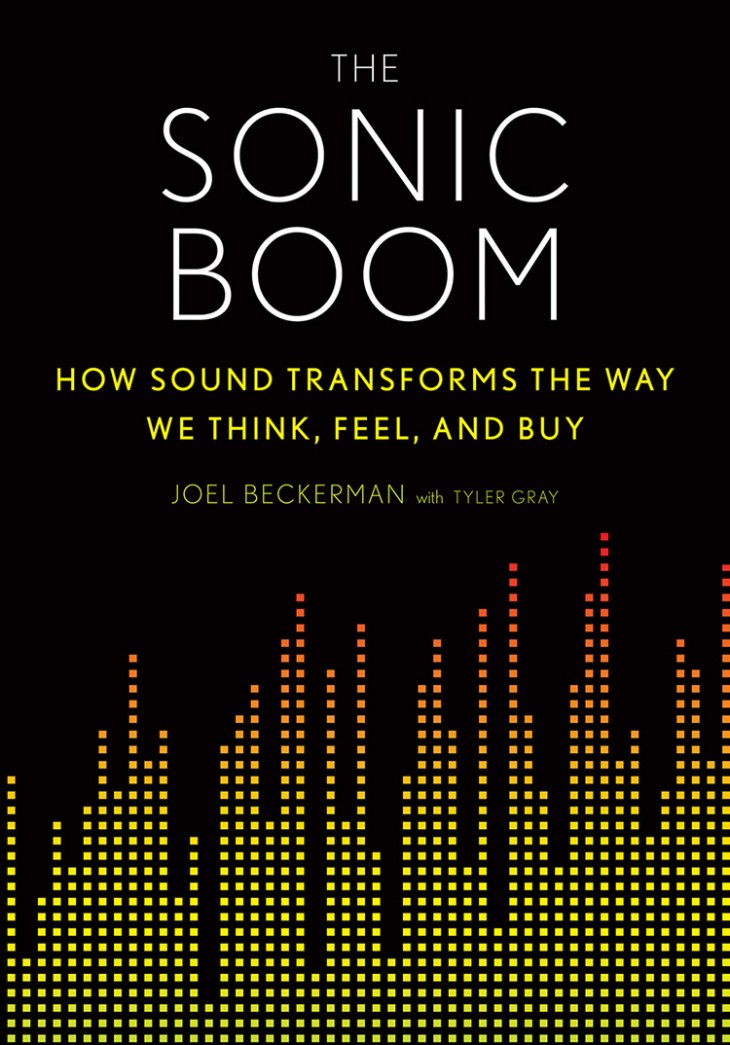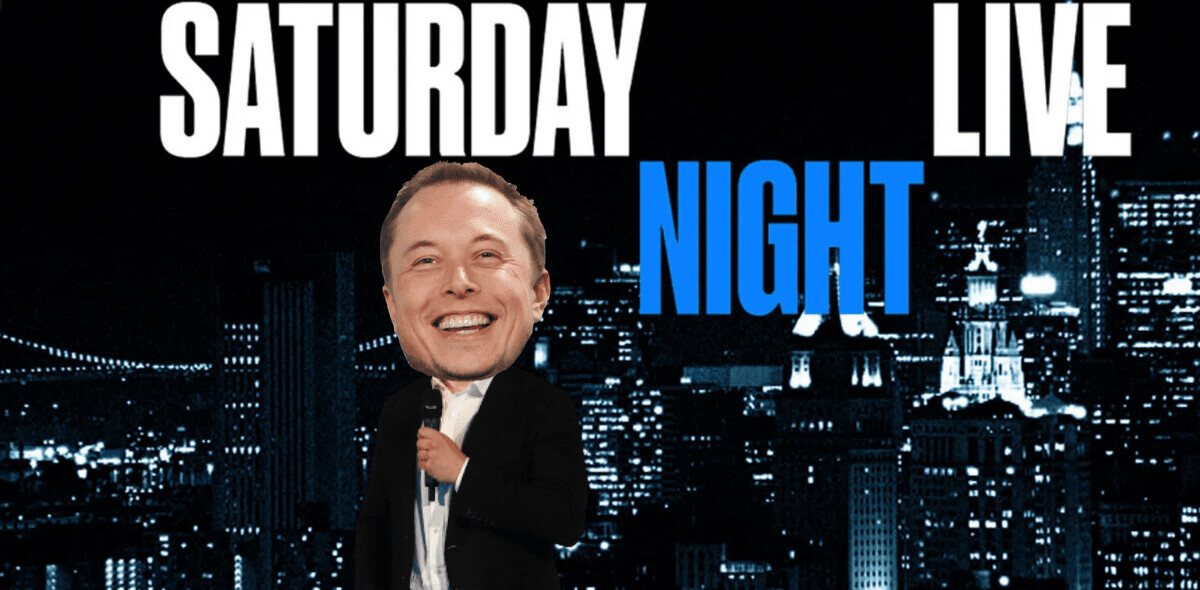
Danny Groner is the manager of blogger partnerships and outreach for Shutterstock. This post was originally published on the Shutterstock blog and has been reprinted with permission.
Did you ever stop to consider how what you hear influences how you spend? That’s a topic that writers Joel Beckerman and Tyler Gray tackle in their new book, The Sonic Boom: How Sound Transforms the Way We Think, Feel, and Buy.
Extremely intrigued, we followed up with co-author Gray to talk more about the book, its principles, and what they mean for modern brands, both big and small.
Shutterstock: This book promises a “surprising look at the hidden power of sound” from brands. What do you mean by that?
Gray: The thing about sound is that it’s all around us all the time, and we don’t have to pay attention to it to feel it. This book is all about recognizing it when you’d otherwise let it slip past your conscious brain. Once you recognize it, you can start to curate it — make a more informed choice about what you want to pay attention to, use, and harness.
Companies who harness this power span the entire spectrum of brands. Audi engineers every sound in its cars, from the engine to the sound of the door closing — the distinctive thunk of the door closing and the unique growl of the European engine signifies luxury.
Disney uses sound masterfully. It starts at the theme parks as soon as you get out of the car — on the tram to the Magic Kingdom, with the trained voice of the announcer; then as you approach the gates and hear the music; then as you enter the park and hear land-appropriate music for each themed area. Frontierland sounds nothing like Tomorrowland. (You wouldn’t want to see a cowboy at Space Mountain; why would you want to hear old-timey music there?)

And there’s a bed of “silence” between each land. It’s not really silence. It’s bird sounds, or wind sounds. Disney uses “sound” to fake quiet so you can cleanse you palette and travel from land to land without confusing the two experiences. At the same time, this sound assures you never leave the overall Disney fantasy — that’s why even the bathrooms are scored.
Lincoln actually produced a pretty solid piece of brand content recently around how brands are using silence to signify luxury. In its MKZ models, there are microphones in the ceilings of the cars’ cockpits that pick up certain levels of noises and send out noise canceling frequencies. Again, the company uses sound to fake silence.
There really isn’t any such thing as true silence. Even in an anechoic chamber, where 99.9 percent of noise is eliminated, you’ll start to hear the sound of your own heartbeat in 15 minutes or so. After 30 or so minutes, you’ll start to hear your blood coursing through your organs. Your ears adjust. It’s almost impossible to spend more than 45 minutes in there for most people without feeling like they’re going nuts.
Did this project help you better understand the power of sound to influence us and our decisions? If so, how did your impressions change?
Once you learn to appreciate sound and music at this level, you’ll hear it used inappropriately everywhere — bad music in ads, bad sound from products. We call this sonic trash. The wrong sound at the wrong time ruins an experience. Sound either enhances an experience or takes away from it. It’s never neutral.
On the flip side, it makes you more deeply appreciate the people who get it right. AT&T’s sonic logo — those four notes at the end of every ad that actually are at the core of themes throughout the brand’s campaign — are used just right. (Full disclosure, Joel Beckerman, whom I wrote this book with, created that sound through his agency, Man Made Music; they’re AT&T’s sonic agency of record.)
I’m one of those rare weirdos who can’t help but get emotional when sound is used well. I actually can’t help getting misty. Hans Zimmer plus Christopher Nolan have the power to reduce me to a weepy little child, even if the music isn’t meant to be sad. It’s why Inception is one of my favorite movies. It’s almost too much to take. I’m like that kid in American Beauty. It’s just so beautiful! The duo has done it again in Interstellar, which I just saw in an early preview in IMAX. I can’t even describe it yet.

But sound can also at times be distracting and counterproductive for a brand. Are there best practices to offer for how and when to use music or other audio accompaniment?
Joel taught me a lot about this. A few of his pointers:
1. When using sound, before you finish, pull the sound out. If you don’t miss it, it shouldn’t be there in the first place.
2. If you’re trying to figure out how to use sound, don’t aim at the instrument, the song, or even the sound itself. Aim for an experience. Then think about what that experience sounds like. Joel’s team at Man Mad Music always tries to figure out what the experience is meant to be, then they translate that experience into the language of sound. It’s astounding to watch because, when it’s done right, it feels immediately honest.
3. Make sure your sound or music is scoring the story of the right character. It happens a lot in film — the score is right, but if it’s scoring the experience of the wrong character, it’ll make the film feel all wrong. Sound does a lot to help you understand what to feel in a movie. Again, Hans Zimmers is masterful at this. In the book, he says something awesome you can try on your own.
If you’re watching a horror movie and things get too intense, don’t cover your eyes — cover your ears. The whole emotional overload will disappear. And you’ll still be able to keep up with what’s happening.
When we think of certain sounds or songs, it conjures up memories and moments for all of us individually. Can you describe a successful campaign that deliberately appealed to our emotions in this way, and how (and why) it paid off for the brand?
For me, it gets no better than Volkswagen’s 1999 ad for its Cabriolet convertible featuring Nick Drake’s “Pink Moon.” There wasn’t a single word in that ad that wasn’t sung. And it told just the right story: how a convertible is all about experiencing the world whizzing by you when you drive. Especially when you’re in that convertible with someone you care about. The words and cadence of the song are just right.
I’ll be honest: I’d never heard of Nick Drake before that spot. I bet you, if they’re being honest, a lot of people would admit this is how they discovered Nick, too. It created a posthumous resurgence in sales of his records. I, for one, ran right out to Park Avenue CDs in Winter Park, Florida, and bought the album after seeing the ad. Later, I bought a Volkswagen. I kid you not. And there are certain romantic experiences I still carry with me that involve playing that song in that car. It was the perfect pairing of ’90s sentiment and product. It wasn’t the first time VW got advertising right.
https://www.youtube.com/watch?v=BIOW9fLT9eY
GE pulled off the same feat with a slew of recent ads. There’s one called The Boy Who Beeps that makes me melt every time. It feels like a Spike Jones mini-film. And the emotion is entirely rooted in sound. GE successfully used sound to make a human, emotional connection to the concept of the industrial internet. That’s a huge feat — the kind that sound is uniquely equipped to handle. Name another moment when you’ve cared so much about the Internet of Things on an emotional level.
https://www.youtube.com/watch?v=FmB8R2v5ZrE
What can small businesses do with this information and knowledge?
In short: make a big emotional impact and stand out. A bodega can use sound and music to differentiate itself from the big-box chain grocery nearby. Sound is how even small businesses can get credit for their uniqueness.
Top image: Abstract background by fotographic1980
Get the TNW newsletter
Get the most important tech news in your inbox each week.





